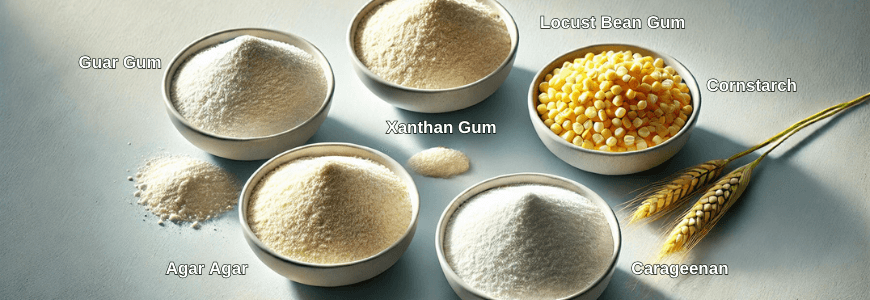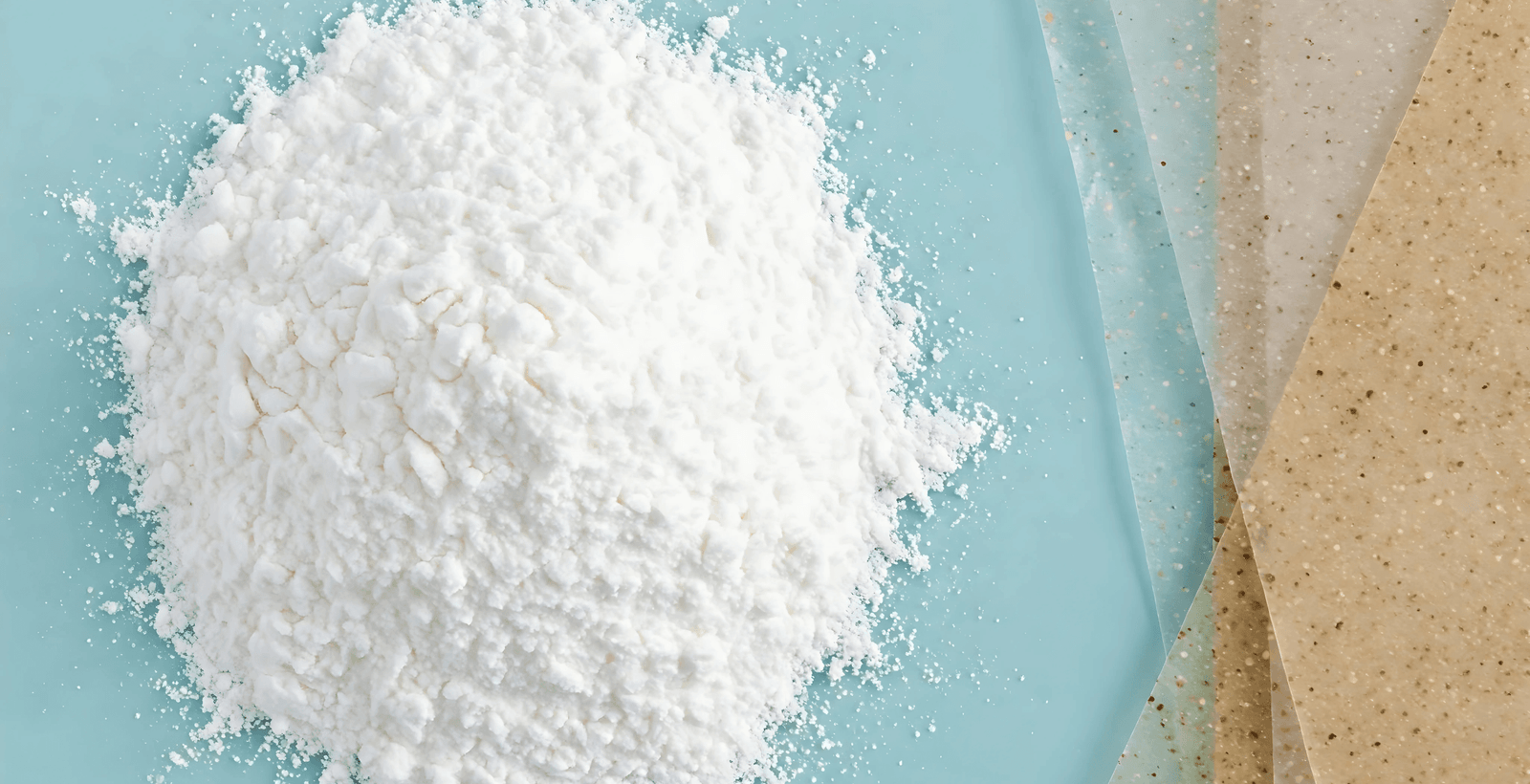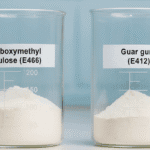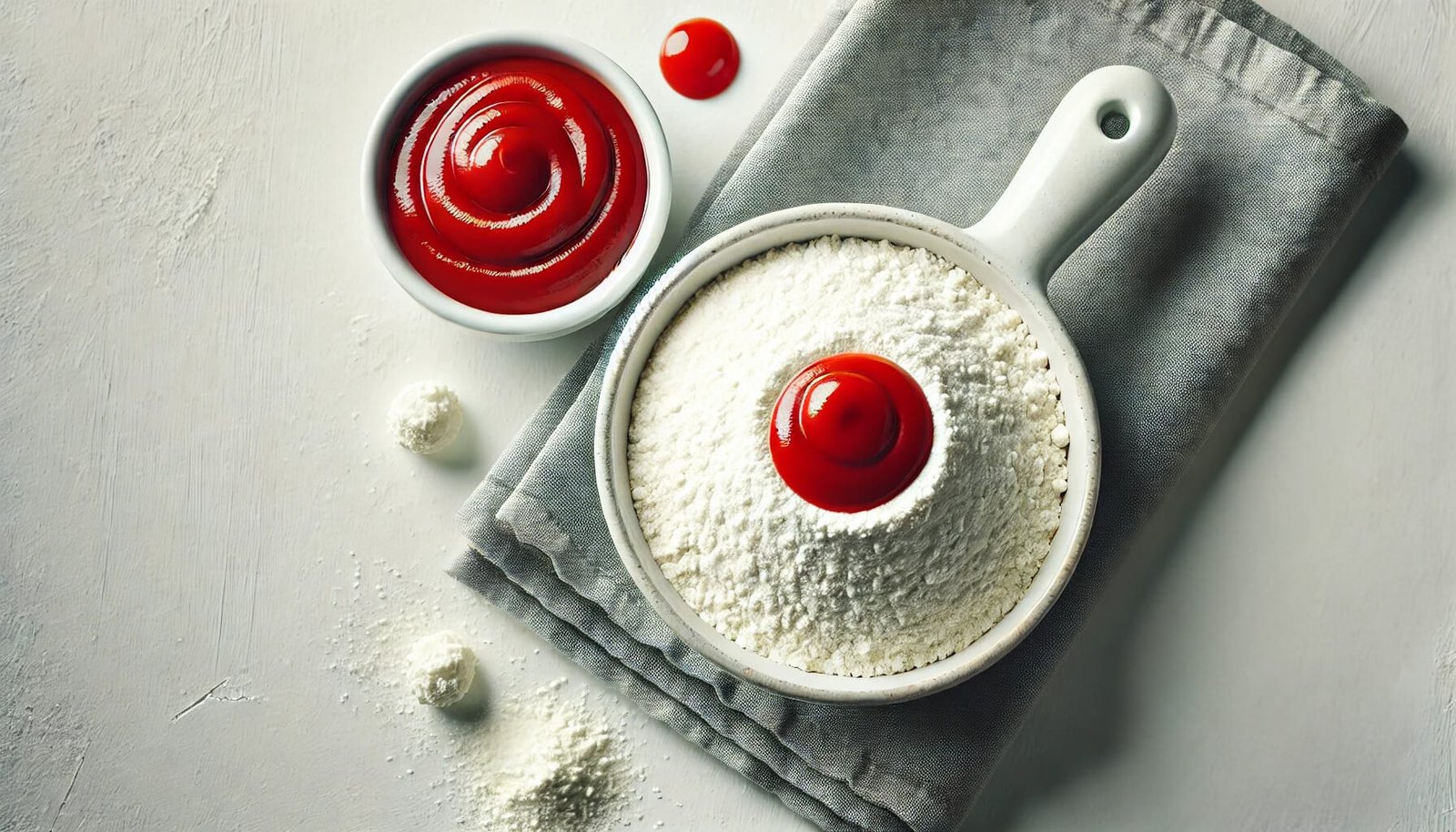When it comes to natural thickeners and stabilizers used in food and industrial applications, Guar Gum vs Other natural polymers often come into consideration. This article breaks down what Guar Gum is, how it compares with other natural polymers, and which one might be the best choice for your specific needs. We will use simple language to ensure everyone can understand the comparison.
What is Guar Gum?
Guar Gum is a natural thickening agent extracted from guar beans. It is known for its ability to create a gel-like consistency when mixed with water. This property makes Guar Gum an excellent ingredient for food products like sauces, ice cream, and baked goods. It also finds applications in industries like oil drilling, where it acts as a stabilizer.
Common Natural Polymers Compared to Guar Gum:
When comparing Guar Gum vs Other natural polymers, we need to look at common alternatives. These include xanthan gum, pectin, carrageenan, and agar-agar. Each of these natural polymers has its unique properties and applications.
1. Xanthan Gum: A popular thickener and stabilizer, xanthan gum is produced through the fermentation of sugar by the Xanthomonas bacteria. It is widely used in gluten-free baking and salad dressings.
2. Pectin: Often derived from fruit, pectin is used mainly in jams and jellies to provide thickness and stability.
3. Carrageenan: Extracted from red seaweed, carrageenan is used for gelling, thickening, and stabilizing dairy and meat products.
4. Agar-Agar: Also seaweed-based, agar-agar is used in vegetarian cooking as a gelatin substitute.
5. Cornstarch: An affordable thickening agent often used in soups, sauces, and gravies. It loses thickening power under high heat and acidic conditions, limiting its versatility.
6. Locust Bean Gum: Sourced from carob tree seeds, locust bean gum is valued in dairy and frozen foods for its smooth texture and works best when combined with other thickeners.
Guar Gum vs Other Natural Polymers – A Detailed Comparison:
1. Thickening Power and Texture:
In the battle of Guar Gum vs Other natural polymers, Guar Gum stands out for its high thickening power. It can absorb a significant amount of water and form a viscous solution even at low concentrations. On the other hand, xanthan gum provides a more consistent texture across various temperatures and pH levels, making it more versatile for certain applications.
2. Application in Food:
The comparison of Guar Gum vs Other natural thickeners is significant in the food industry. Guar Gum is often used in baked goods for moisture retention, whereas pectin works well for making fruit-based products like jams. Agar-agar is preferred for vegan desserts, and carrageenan is popular in dairy products.
3. Cost-Effectiveness:
A major point in choosing between Guar Gum vs Other natural polymers is the cost. Guar Gum is usually more cost-effective due to the abundance of guar beans and relatively straightforward processing. However, pectin and agar-agar can be more expensive because they rely on specific sources like fruits and seaweed.
4. Nutritional and Health Benefits:
Guar Gum and other natural polymers like pectin and xanthan gum offer unique health benefits. Guar Gum is high in soluble fiber, which can help with digestion and weight management. Pectin is also high in fiber, while xanthan gum is known for its low-calorie content. This is an important aspect of the Guar Gum vs Other comparison, especially for health-conscious consumers.
5. Industrial Uses:
Beyond food, the comparison of Guar Gum vs Other polymers extends to industrial applications. Guar Gum is used in oil drilling for its stabilizing properties, while xanthan gum is used in the cosmetic and pharmaceutical industries for its emulsifying properties.
Pros and Cons of Guar Gum and Other Natural Polymers:
1. Guar Gum:
Pros: High thickening power, cost-effective, rich in soluble fiber.
Cons: Can lose effectiveness when exposed to very high temperatures.
2. Xanthan Gum:
Pros: Stable across a range of temperatures and pH levels.
Cons: More expensive than Guar Gum.
3. Pectin:
Pros: Natural source, great for fruit-based products.
Cons: Less versatile as a thickener compared to Guar Gum.
4. Carrageenan:
Pros: Effective for gelling in dairy and meat products.
Cons: Has faced some criticism over its potential health effects.
5. Agar-Agar:
Pros: Works well for vegan recipes, heat-stable.
Cons: Limited use outside of specific food products.
6. Cornstarch:
Pros: Common, affordable, and effective for thickening sauces and soups.
Cons: Loses thickening power in acidic or high-temperature conditions, offers fewer health benefits than guar gum.
7. Locust Bean Gum:
Pros: Adds smoothness and stability, often used in conjunction with other gums like carrageenan or guar for a synergistic effect, good for dairy and frozen foods.
Cons: Not as effective alone as guar or xanthan, higher cost, limited thickening power when used on its own.
Environmental Impact of Natural Polymers – A Comparison:
1. Sustainability of Guar Gum: Guar Gum is derived from guar beans, which are a renewable resource. Its cultivation doesn’t require excessive water or synthetic fertilizers, making it relatively eco-friendly.
2. Production Processes of Other Polymers: Discuss the environmental costs associated with producing xanthan gum (produced through fermentation of sugars, which may require significant energy) and other synthetic thickeners, which might involve more chemical processing.
3. Biodegradability: Natural polymers like Guar Gum are biodegradable and have a lower environmental footprint compared to synthetic counterparts like polyvinyl alcohol (PVA), which can persist in the environment longer.
Potential Side Effects and Safety of Natural Polymers:
1. Gastrointestinal Effects: While Guar Gum is generally safe, it can cause mild gastrointestinal issues like bloating or gas, especially when consumed in large quantities.
2. Allergic Reactions: Some individuals may be allergic to Guar Gum, particularly when used in food products. It’s important to be aware of any adverse reactions.
3. Regulatory Oversight: Guar Gum and other natural polymers are generally recognized as safe (GRAS) by food safety authorities like the FDA when used within recommended limits.
Guar Gum vs Other Synthetic Thickeners:
1. Natural vs Synthetic: Guar Gum is plant-based and naturally derived, while synthetic thickeners like hydroxyethyl cellulose (HEC) and PVA are man-made. Natural alternatives tend to have fewer health risks and are more environmentally friendly.
2. Health Benefits: Natural thickeners like Guar Gum often contain beneficial properties, such as soluble fiber that aids digestion, whereas synthetic thickeners can contain chemicals that may cause allergic reactions or other health issues.
3. Cost and Accessibility: Guar Gum is generally more affordable and accessible compared to synthetics, which are often more expensive due to complex manufacturing processes.
Conclusion: Choosing Between Guar Gum vs Other Natural Polymers:
When it comes to deciding between Guar Gum vs Other natural polymers, the choice depends on the specific application and budget. For high-thickening needs at a lower cost, Guar Gum is an excellent option. However, if stability across different conditions is necessary, xanthan gum or carrageenan might be better suited.
Understanding the differences in properties, applications, and costs can help consumers and manufacturers make informed decisions about which natural polymer to use.
FAQs:
1. How does Guar Gum compare to other thickeners?
In comparison to other thickeners, Guar Gum is stronger and often more cost-effective.
2. Is Guar Gum safe for consumption?
Yes, Guar Gum is generally safe when consumed in moderation.
3. What’s the main difference between Guar Gum and Xanthan Gum?
Guar Gum is bean-based, while xanthan is fermented from sugar.
4. Is Guar Gum better than Cornstarch?
Guar Gum is a stronger thickener than cornstarch and works in lower amounts.
5. What’s the best thickener for dairy products?
Guar gum and locust bean gum are ideal for dairy.
6. Is Guar Gum a vegan alternative to gelatin?
Yes, though agar-agar is another vegan option, Guar Gum is effective.
7. Is Guar Gum cost-effective compared to other thickeners?
In Guar gum vs other thickeners, Guar Gum is generally more affordable.
8. How does Guar Gum compare to Pectin?
Guar Gum is more versatile, while pectin is mainly used in jams and fruit products.
9. What about cost differences between Guar Gum and Carrageenan?
Guar Gum is often more cost-effective compared to Carrageenan, making it a popular choice for large-scale applications.
10. Is Guar Gum environmentally friendly?
Yes, Guar Gum is biodegradable and renewable.







